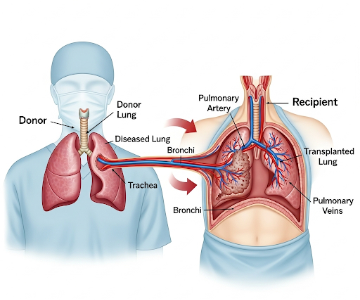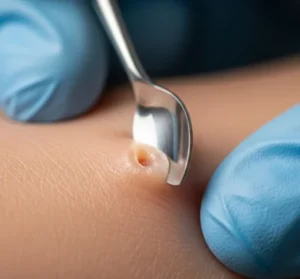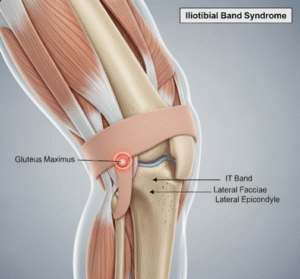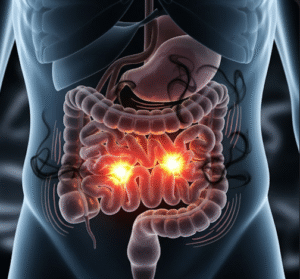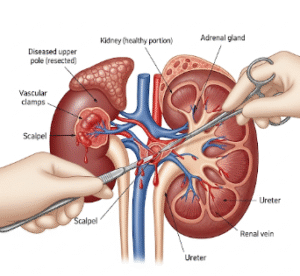Overview
A lung transplant is a major surgical procedure in which one or both diseased lungs are replaced with healthy lungs from a donor. This procedure is usually considered for patients with end-stage lung disease when all other treatments have failed. Lung transplantation can significantly improve breathing, energy levels, and overall quality of life, but it is also a complex operation with lifelong implications.
What is a Lung Transplant?
The lungs play a vital role in supplying oxygen to the body and removing carbon dioxide. When they become permanently damaged due to chronic conditions, the body cannot get enough oxygen to function properly. A lung transplant offers a new set of healthy lungs that can restore proper breathing and extend life expectancy.
Types of Lung Transplants:
- Single-lung transplant – Replacement of one lung.
- Double-lung transplant – Replacement of both lungs, common in conditions like cystic fibrosis or severe COPD.
- Heart-lung transplant – Rare, performed when both the heart and lungs are severely diseased.
Conditions that may require a lung transplant include:
- Chronic Obstructive Pulmonary Disease (COPD)
- Pulmonary fibrosis
- Cystic fibrosis
- Pulmonary hypertension
- Sarcoidosis
Risks / Benefits
Benefits:
- Improved breathing and oxygen levels.
- Longer life expectancy compared to untreated end-stage lung disease.
- Better mobility and independence in daily activities.
- Enhanced quality of life.
Risks:
- Organ rejection – The immune system may attack the new lung.
- Infections – Immunosuppressive drugs increase infection risk.
- Surgical complications – Bleeding, blood clots, or airway issues.
- Long-term side effects – From medications, including kidney damage, diabetes, and high blood pressure.
How You Prepare
Preparing for a lung transplant requires careful planning and medical evaluation:
- Eligibility assessment: Detailed tests of lung, heart, and other organ functions.
- Donor matching: Blood type and tissue compatibility are checked to find a suitable donor.
- Pre-transplant conditioning: Some patients may need rehabilitation, oxygen therapy, or nutritional support.
- Lifestyle adjustments: Quitting smoking, exercising regularly, and following a strict diet.
- Emotional preparation: Counseling and support for stress and anxiety during the waiting period.
Patients are placed on a transplant waiting list, and surgery is scheduled as soon as a suitable donor becomes available.
What You Can Expect
During the procedure:
- Anesthesia: Patients are put under general anesthesia.
- Surgery duration: The operation may last 6–12 hours depending on whether one or both lungs are transplanted.
- Surgical process: The diseased lung is removed and replaced with a donor lung, which is connected to the airways and blood vessels.
- Post-surgery care: The patient is moved to the intensive care unit (ICU) for close monitoring.
Mechanical ventilation and oxygen support are usually required immediately after surgery until the new lungs begin working properly.
After the Procedure
Recovery is an intensive process:
- Hospital stay: Patients remain in the hospital for 2–3 weeks or longer.
- Medications: Immunosuppressants are prescribed to prevent rejection.
- Rehabilitation: Pulmonary rehab helps patients regain strength and improve breathing capacity.
- Frequent checkups: Lung function tests, X-rays, and biopsies are done regularly.
- Infection prevention: Strict hygiene, safe diet, and avoiding crowded places are necessary.
Results
The outcome of a lung transplant varies depending on the patient’s condition, age, and overall health:
- Most patients experience significant improvement in breathing and activity levels.
- The 1-year survival rate after lung transplantation is around 85–90%.
- With proper care, many patients live 10 years or longer after surgery.
- Some may experience chronic rejection, requiring long-term medical management.
Life After a Lung Transplant
Living with a new lung requires lifelong adjustments:
- Daily medications: Immunosuppressants must be taken for life.
- Healthy lifestyle: A balanced diet, regular exercise, and no smoking are essential.
- Regular monitoring: Routine follow-up visits with the transplant team are mandatory.
- Emotional well-being: Support groups and counseling can help patients cope with the stress of long-term recovery.
- Long-term outlook: Many patients return to work, enjoy hobbies, and live independently, but they must remain vigilant against infections and complications.

